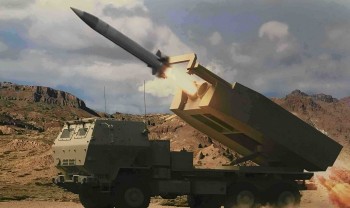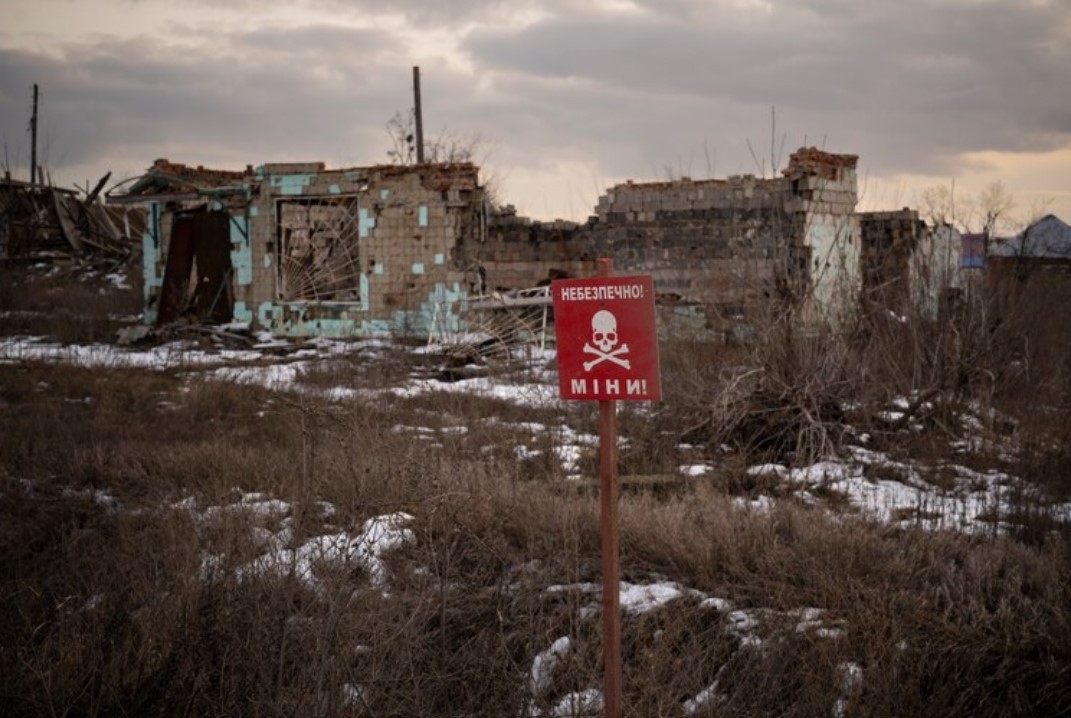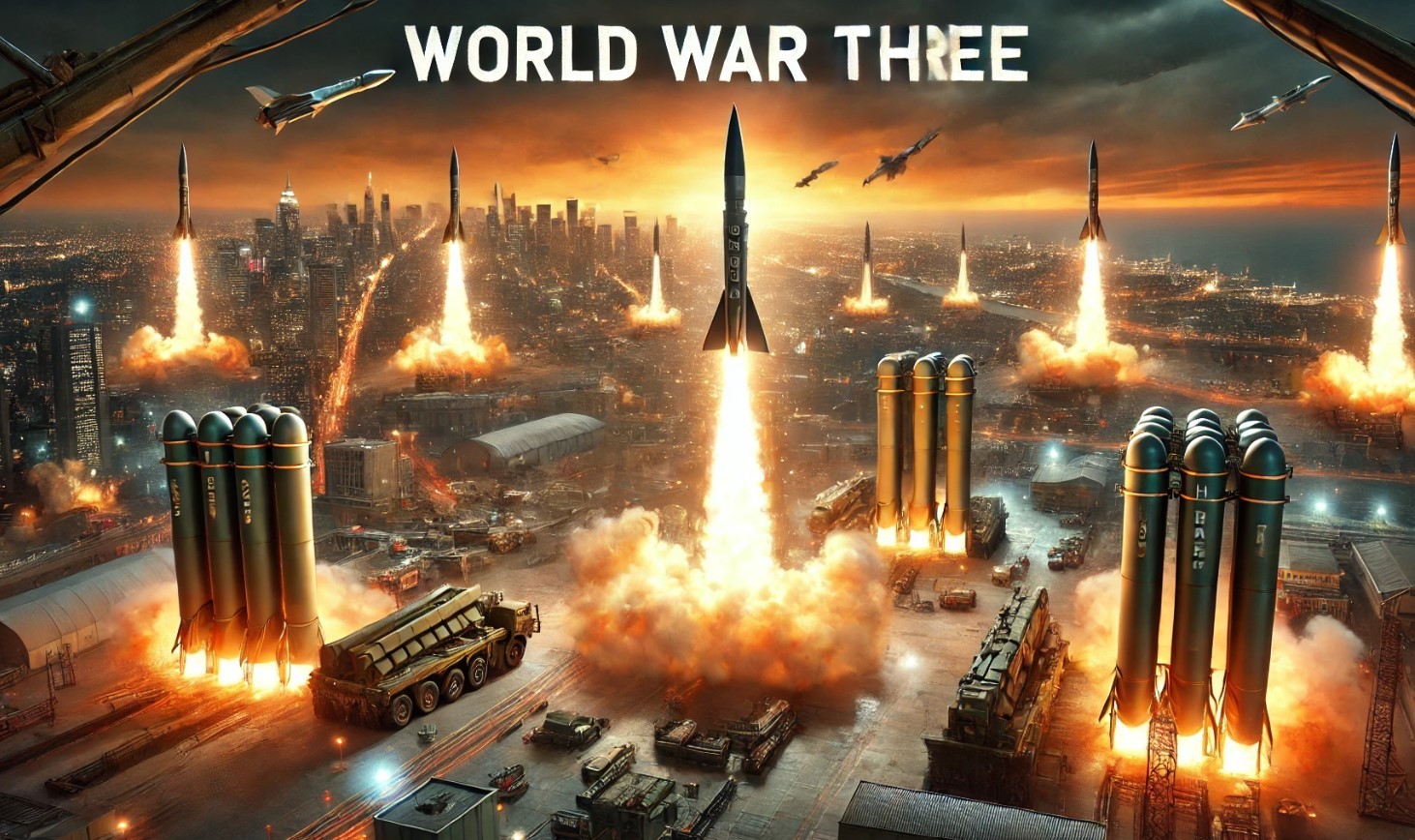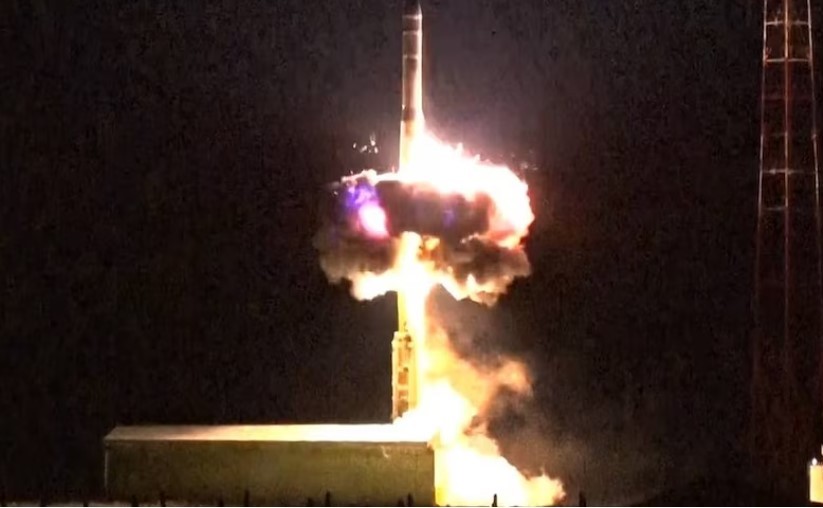What Makes an ICBM Deadly? Nuclear Warheads, and Catastrophic Impact
Intercontinental Ballistic Missiles (ICBMs) are among the most powerful weapons ever developed, representing the pinnacle of military technology and deterrence strategies. Capable of carrying nuclear warheads across vast distances, ICBMs have the potential to delnuclear warheadiver catastrophic destruction in mere minutes.
Video - Russia first launched Sarmat missile from Plesetsk cosmodrome
As tensions rise globally, questions about their deployment and use in active conflict, particularly by Russia, have gained significant attention. This article delves into the nature of ICBMs, their destructive capacity, operational range, and whether they have been used by Russia in combat, including the recent reports of possible use in Ukraine.
 What is ATACMS? The Long-Range U.S. Missile Empowering Ukraine Against Russia What is ATACMS? The Long-Range U.S. Missile Empowering Ukraine Against Russia |
 |
| a Yars intercontinental ballistic missile is test-fired as part of Russia’s nuclear drills from a launch site in Plesetsk |
Understanding Intercontinental Ballistic Missiles (ICBM)
1. What is an ICBM?
An ICBM is a long-range missile designed to deliver nuclear or conventional warheads over intercontinental distances. These missiles are engineered to follow a ballistic trajectory, meaning they arc through space before descending back to Earth toward their target.
2. Key Characteristics of ICBMs
- Range: ICBMs typically have a minimum range of 5,500 kilometers (3,400 miles), but modern variants can exceed 10,000 kilometers (6,200 miles), enabling them to strike targets across continents.
- Speed: They travel at speeds of up to 7 kilometers per second (about 25,000 km/h or 15,500 mph), making them almost impossible to intercept during the midcourse phase.
- Payload: Most ICBMs are designed to carry multiple independently targetable reentry vehicles (MIRVs), which allow a single missile to deliver multiple warheads to different targets.
3. Phases of Flight
An ICBM’s flight is divided into three phases:
- Boost Phase: The missile is propelled into space by its rocket engines.
- Midcourse Phase: It coasts through space, guided by advanced navigation systems.
- Reentry Phase: The warheads descend back into the atmosphere toward their targets.
The Power and Destructive Potential of ICBMs
1. Destructive Capacity
The devastating power of ICBMs lies in their ability to deliver nuclear warheads. Modern warheads range from hundreds of kilotons to several megatons in yield, with each kiloton equivalent to the explosive power of 1,000 tons of TNT.
- Hiroshima Comparison: The bomb dropped on Hiroshima in 1945 was 15 kilotons. A modern nuclear warhead on an ICBM could range between 100 to 1,000 kilotons or more, making it vastly more destructive.
2. Multi-Warhead Capability
The use of MIRVs multiplies an ICBM’s lethality:
- Multiple Targets: A single missile can strike multiple cities or military bases.
- Decoy Systems: Some MIRVs include decoys to confuse enemy missile defense systems.
3. Collateral Damage
The immediate effects of an ICBM strike include:
- Blast Wave: A shockwave capable of flattening buildings within a large radius.
- Thermal Radiation: Intense heat that can cause fires and severe burns.
- Nuclear Fallout: Long-lasting radiation that contaminates the environment.
Operational Range of ICBMs
ICBMs are designed to travel intercontinental distances, allowing them to strike any location on Earth.
1. Leading ICBM Systems by Range
- Russia's RS-28 Sarmat (Satan II): Range of 18,000 kilometers (11,185 miles), capable of reaching the U.S. from Russia.
- U.S.’s Minuteman III: Range of 13,000 kilometers (8,078 miles).
- China's DF-41: Estimated range of 15,000 kilometers (9,320 miles).
2. Global Reach
ICBMs enable nations to project power globally, making them central to the concept of nuclear deterrence. For instance:
- A Russian ICBM launched from Siberia could strike Washington, D.C., in about 30 minutes.
- Similarly, a U.S. ICBM from North Dakota could target Moscow within the same timeframe.
ICBMs and Russia: Historical and Recent Use
1. Historical Context
Russia (formerly the Soviet Union) has been a pioneer in ICBM development:
- R-7 Semyorka: The first-ever operational ICBM, launched by the Soviet Union in 1957.
- Cold War Era: The Soviet Union and the United States amassed vast arsenals of ICBMs, central to the doctrine of Mutually Assured Destruction (MAD).
2. Russia’s Modern ICBMs
Russia maintains an extensive ICBM arsenal, including:
- RS-28 Sarmat (Satan II): A next-generation ICBM with advanced penetration aids to bypass missile defenses.
- RS-24 Yars: A road-mobile system capable of carrying multiple warheads.
- Topol-M: A silo-based and road-mobile ICBM with advanced maneuverability.
Has Russia Used ICBMs in Combat?
1. Traditional Role of ICBMs
ICBMs have historically served as strategic deterrents, designed to prevent wars rather than be used in active combat. Their deployment as a direct weapon has been avoided due to the catastrophic consequences of nuclear escalation.
2. Russia’s Alleged Use of an ICBM in Ukraine
Ukraine’s military has recently accused Russia of launching an Intercontinental Ballistic Missile (ICBM) into Ukrainian territory. This claim, if verified, would mark a significant escalation in the ongoing war, which has now surpassed 1,000 days.
Key Details of the Incident
- Ukrainian officials have not specified the type of ICBM used, but experts suggest it could be a RS-24 Yars or another advanced system in Russia's arsenal.
- The missile reportedly struck a non-military target, raising questions about whether the attack was a symbolic demonstration of power or a direct military maneuver.
- This would represent the first recorded use of an ICBM in the Ukraine conflict, shifting its dynamics significantly.
Significance of the Allegation
- Strategic Escalation: If true, this marks a departure from Russia’s previous reliance on shorter-range missiles, drones, and artillery in Ukraine. The use of an ICBM, even with a conventional warhead, represents a more aggressive posture.
- Message to the West: Analysts believe this could be a deliberate signal to NATO and the United States, showcasing Russia’s advanced missile capabilities.
- Risk of Retaliation: The use of an ICBM raises concerns about potential retaliation from Western allies, especially if the strike is viewed as a test of global red lines.
If Russia were to use an ICBM, even without nuclear warheads, it would signal an alarming escalation, potentially provoking international retaliation.
Challenges and Controversies Surrounding ICBMs
1. Deterrence vs. Provocation
While ICBMs are central to deterrence strategies, their existence perpetuates a dangerous arms race:
- Proliferation: Nations like North Korea are developing ICBM capabilities, raising global tensions.
- Accidental Launch Risks: The complex systems governing ICBMs are susceptible to human error or cyberattacks.
2. Cost
Developing and maintaining ICBM systems requires substantial resources:
- The U.S. spends billions annually on the modernization of its nuclear arsenal.
- Russia’s development of systems like the RS-28 Sarmat diverts resources from other military and economic needs.
Conclusion
Intercontinental Ballistic Missiles (ICBMs) epitomize the destructive potential of modern military technology. With their unparalleled range, speed, and power, they serve as both a deterrent and a symbol of global tension. While historically used as a strategic weapon to prevent wars, the specter of ICBM use in conflicts like the Ukraine war raises troubling questions about their role in modern warfare.
As the world balances on the edge of geopolitical uncertainty, the continued existence and development of ICBMs underscore the need for robust international dialogue, disarmament efforts, and mechanisms to prevent their catastrophic use. Whether as tools of deterrence or harbingers of destruction, ICBMs remain a central pillar of 21st-century military strategy, and their story is far from over.
FAQs: Intercontinental Ballistic Missiles (ICBMs) and Their Use in the Ukraine Conflict
1. What is an Intercontinental Ballistic Missile (ICBM)?
An ICBM is a long-range missile designed to deliver nuclear or conventional warheads over distances of more than 5,500 kilometers (3,400 miles). These missiles follow a ballistic trajectory and can strike targets across continents within minutes.
2. How powerful are ICBMs?
ICBMs can carry multiple warheads, each with destructive yields ranging from hundreds of kilotons to several megatons. For perspective, a single modern ICBM warhead is several times more powerful than the atomic bomb dropped on Hiroshima.
3. Has Russia ever used ICBMs in combat before?
No. Historically, ICBMs have been reserved for strategic deterrence and have not been used in active combat. The recent allegation by Ukraine that Russia fired an ICBM into its territory, if confirmed, would mark the first combat use of such a weapon.
4. Why is the alleged ICBM strike in Ukraine significant?
If true, this would represent a major escalation in the conflict. The use of an ICBM—even with a conventional warhead—signals a shift in Russia’s military strategy, potentially breaking long-standing norms about the use of strategic weapons in regional conflicts.
5. What could happen if ICBMs are used in warfare?
The use of ICBMs risks catastrophic consequences, including:
- Humanitarian Impact: Massive casualties, environmental devastation, and infrastructure destruction.
- Global Escalation: Provoking international retaliation and possibly leading to wider conflicts.
- Erosion of Deterrence Norms: Encouraging other nations to consider using strategic weapons in future conflicts.
6. How are ICBMs defended against?
ICBMs are challenging to intercept due to their speed and trajectory. However, nations like the U.S. and Russia have developed missile defense systems such as:
- Ground-Based Interceptors (GBI): Designed to target ICBMs during the midcourse phase.
- THAAD and Aegis Systems: Used for terminal-phase interception.
7. Is there evidence that Russia used an ICBM in Ukraine?
Ukraine has accused Russia of firing an ICBM into its territory. While specific details about the type of missile and its target remain unverified, the claim has raised significant concerns about escalation in the conflict.
8. How does the use of ICBMs affect global security?
The deployment of ICBMs in active combat undermines the principles of nuclear deterrence and non-proliferation, increasing the risk of arms races, accidental launches, and broader conflicts.
9. Are ICBMs designed only for nuclear war?
No, while ICBMs are primarily associated with nuclear warheads, some variants can carry conventional payloads for precision strikes against large, strategic targets.
10. How is the international community responding to these developments?
If Russia’s use of an ICBM is confirmed, it could lead to:
- Stronger sanctions against Moscow.
- Increased military aid to Ukraine.
- Greater international focus on preventing the use of strategic weapons in regional conflicts.
 The Threat of World War Three from Ukraine’s Use of Long-Range Missiles The Threat of World War Three from Ukraine’s Use of Long-Range Missiles In this analysis, we will explore the geopolitical and military implications of this escalation, examine the rhetoric and potential responses from Russia, and assess whether ... |
 The Anti-personnel Landmines Sent to Ukraine: Banned by Over 150 Nations, Approved by the U.S. The Anti-personnel Landmines Sent to Ukraine: Banned by Over 150 Nations, Approved by the U.S. On November 20, 2024, U.S. Defense Secretary Lloyd Austin announced that the Biden administration would permit Ukraine to utilize American-supplied anti-personnel landmines in its defense ... |


























